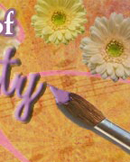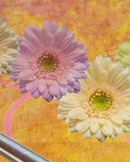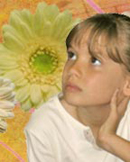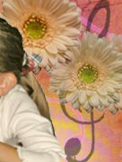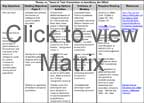There are many programs/enrichment activities that develop creative thinking. Before we look at them it is a good idea to pre-test students to ensure appropriate pacing and prevent redundancy. Allow gifted students to participate in selecting content beyond the prescribed curriculum. When creative students are exposed to broad-based issues, creative thought is stimulated. Finally the student should have many opportunities to authentically assess his/her work and process. This will be explained in detail in the gifted endorsement course on Curriculum. After this is established, the classroom is ready for activities that nurture and develop creativity. A useful tool in planning for your gifted students’ instruction is the Planning for Differentiated Instruction handout. Differentiated instruction mirrors the creative process and ensures that instruction fits students’ levels and abilities.
One more thing to consider before we get to activities is the dynamics of group and individual creativity. Some students’ creative ideas flourish when they collaborate, and other students’ creativity thrives when they can get lost in a project without regard to others. Both experiences are valuable and have a place in gifted classrooms.
In the gifted classroom, students are often paired or grouped to research and develop solutions to a problem. Groups may be structured by way of “cooperative learning” techniques or are pre-selected by the teacher who matches students with optimal partners. Allowing the students the opportunity to participate in their area of strength increases their confidence and motivates all to work within a group, however, groups should be designed with sensitivity for students’ comfort zones and areas of interest. Leadership and socialization skills are necessary in order to work as a group, and for gifted students whose creativity lies in these areas, collaborative creativity thrives. Still, for those who prefer to work independently, group activities may not be favored. Consider the dynamics of group and individual creativity when reading this week’s content.
To get you started, review these ideas you could immediately use in your classroom that would help get the creative juices flowing:
 After reading about ideas that you could immediately put to use in your classroom, let's view one of the ideas in action. "What if?" is an open-ended questioning technique that encourages brainstorming and critical thinking. As students brainstorm ideas, they begin to realize the cause and effect relationships between problems and possible solutions. Click on the daisy to launch a video of a class participating in "What If?"
After reading about ideas that you could immediately put to use in your classroom, let's view one of the ideas in action. "What if?" is an open-ended questioning technique that encourages brainstorming and critical thinking. As students brainstorm ideas, they begin to realize the cause and effect relationships between problems and possible solutions. Click on the daisy to launch a video of a class participating in "What If?" Another activity that you could immediately put to use in your classroom is visualization. Visualization leads students to a creative state of mind by using their imaginations to prepare them for an lesson. Click on the daisy to launch a video of an elementary art teacher who begins a lesson with a make-believe journey into outer space.
Another activity that you could immediately put to use in your classroom is visualization. Visualization leads students to a creative state of mind by using their imaginations to prepare them for an lesson. Click on the daisy to launch a video of an elementary art teacher who begins a lesson with a make-believe journey into outer space. These next activities and techniques require a little planning and teaching. A brief introduction is provided below before you read more about them in your textbook.
Six Thinking Hats & Lateral Thinking
Another way to promote creative thinking with your gifted students is to use Edward de Bono’s Lateral Thinking and Six Thinking Hats. De Bono’s thinking strategies aim is to overcome expectations and mental patterns that interfere with creativity by “moving sideways” to find new approaches to problems. Each of the six, metaphorical hats represents a different type of thinking to be used when considering a problem. Students use these “hats” to look at a situation from different perspectives.
Synectics
Another activity that is very popular with gifted students who love the arts and excel in divergent thinking abilities is synectics. Synectics is taking two opposite ideas and putting them together. It is a structured problem-solving technique that uses metaphors to solve problems.
SCAMPER
SCAMPER is an acronym created by Bob Eberle to represent a set of idea-triggering questions. The technique uses a directed set of questions in order to come up with new ideas. The lateral questioning enables students to make changes to products or problems by getting students to think differently about them. SCAMPER is the acronym for a list of words that can help students think differently about a problem and enhance creativity.
Substitute (a person, place, time or situation)
Combine (bring together ideas or situations)
Adapt (adjust to suit a purpose)
Modify/Magnify/Minify (change physical size or personality traits, or change the setting)
Put to other uses (such as putting a different slant on a plot)
Eliminate (a feature or the story)
Reverse or Rearrange (sequence)
SCAMPER works by providing a list of active verbs that you associate with your problem and hence create ideas. As they are all verbs, they are about doing, and so get you to think about action.



